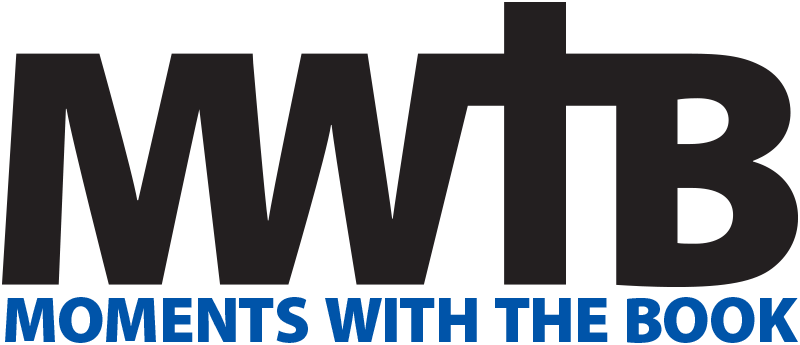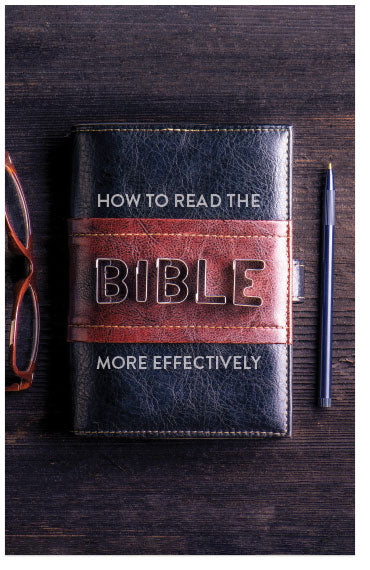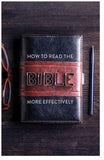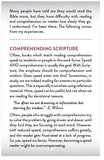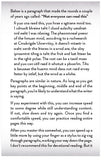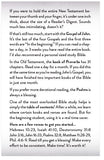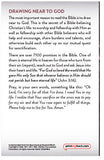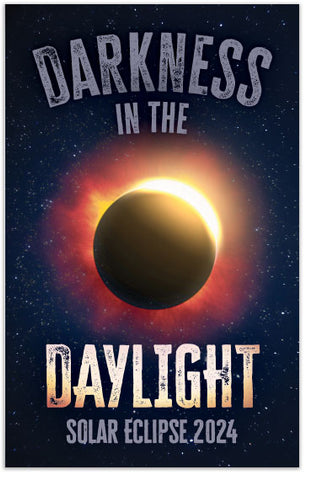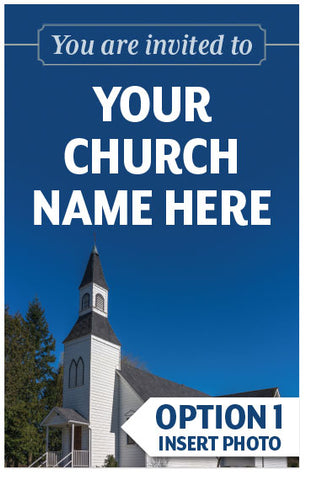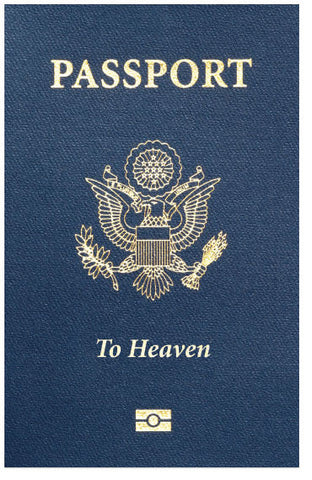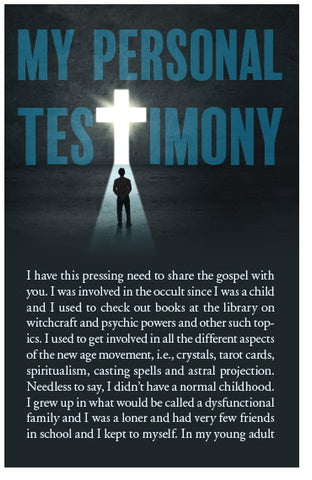How To Read The Bible More Effectively
Special-Order Folded Tract
 NOTE: This item is custom-printed to order (click for more details).
NOTE: This item is custom-printed to order (click for more details).
This tract is from our print-on-demand library, and is not kept in stock. Select the options below, and we will custom-print a batch just for you. Because this item is custom-printed, you can add your custom imprint to the back page at no extra cost.
- Estimated shipping date: Wednesday, November 26 (Click for more details)
- SKU:
- Discounts: Discount coupons do not apply to this item
- Format: Folded Tract
- Size: 3.5 inches x 5.5 inches
- Pages: 6
- Imprinting: Available with 5 lines of custom text
- Version: NASB
- Returns: Because this item is custom-printed to order, it cannot be returned.
Show all item details
The full text of this tract is shown below in the NASB version. (Do you want to print this tract in a different version than the one listed? Contact us and let us know what you're looking for—we may be able to create the alternate version for you at no charge.)
Many people have told me they would read the Bible more, but they have difficulty with reading and comprehension no matter how slowly they go. I understand. I’ve been there. The following comes from my experiences.
Comprehending Scripture
Often, books which teach reading comprehension speak to students or people in the work force. Speed AND comprehension is usually the goal. With Scripture, the emphasis should be comprehension and wisdom. Does speed enter into this? Sometimes, in study, we are indeed reading for answers to particular questions. This is especially true when using reference material. Here, speed can be useful, but not when we are reading for devotional reasons.
“Too often we are drowning in information but starving for wisdom.” -E. Wilson
Often, people who struggle with comprehension try to solve the problem by going slower and slower until they find they are focusing on each word. However, with reduced speed, comprehension suffers greatly, and the reader gets frustrated at a lack of progress. So, yes, speed is a factor. However, becoming a speed reader might be overcompensating.
Below is a paragraph that made the rounds a couple of years ago called: “Not everyone can read this”
fi yuo cna raed this, yuo hvae a sgtrane mnid too. I cdnuolt blveiee taht I cluod aulaclty uesdnatnrd waht I was rdanieg. The phaonmneal pweor of the hmuan mnid, aoccdrnig to a rscheearch at Cmabrigde Uinervtisy, it dseno’t mtaetr in waht oerdr the ltteres in a wrod are, the olny iproamtnt tihng is taht the frsit and lsat ltteer be in the rghit pclae. The rset can be a taotl mses and yuo can sitll raed it whotuit a pboerlm. Tihs is beuseae the huamn mnid deos not raed ervey lteter by istlef, but the wrod as a wlohe.
Paragraphs are similar in nature. As long as you get key points at the beginning, middle and end of the paragraph, you’re likely to understand what the writer is saying.
If you experiment with this, you can increase speed to some degree while still understanding content. If not, slow down and try again. Once you find a comfortable speed, you can practice reading entire pages this way.
After you master this somewhat, you can speed up a little more by using your finger as a stylus to zig-zag through paragraphs, working your way down the page. I don’t recommend this for devotional reading. But it does have value in doing research and is a tremendous confidence builder.
Here is another example of the ability of the mind to comprehend.
Scripture was written, in the original language, without any punctuation or spaces between words. Here is an example of John 3:16-18 rendered in English.
FORGODSOLOVEDTHEWORLDTHAT
HEGAVEHISONLYBEGOTTENSONTHAT
WHOEVERBELIEVESINHIMSHALLNOT
PERISHBUTHAVEETERNALLIFE
Amen!!!
There are Many Ways to Read and Study the Bible
The Bible isn’t like any other book. It’s actually a collection of 66 books and letters. Despite the fact that the first three words are “In the beginning,” you can actually start just about anywhere. Here I attempt at giving the reader a few ideas.
The Bible is divided up into sections: History, Law, Poetry, Wisdom, Prophecy, and the New Testament.
The first four books of the New Testament are the Gospel accounts of Matthew, Mark, Luke and John.
If you were to hold the entire New Testament between your thumb and your finger, it’s under one inch thick, about the size of a Reader’s Digest. Sounds much less intimidating, doesn’t it?
If that’s still too much, start with the Gospel of John. It’s the last of the four Gospels and the first three words are “In the beginning.” If you can read a chapter a day, in 3 weeks you have read the entire book. I’d also recommend a personal sized study Bible.
In the Old Testament, the book of Proverbs has 31 chapters. Read one a day for a month. If you did this at the same time as you’re reading John’s Gospel, you will have finished two important books of the Bible in just one month.
If you prefer more devotional reading, the Psalms is always a blessing.
One of the most overlooked Bible study helps is simply the table of contents! After a while, we learn where certain books and verses are found. But for the beginning student, using it is a real time saver.
Here are a few verses to get you started…
Hebrews 10:23, Isaiah 41:10, Deuteronomy 31:8 John 3:16, John 16:33, Psalms 32:8, Matthew 11:28-29, Phil. 4:6-9. Read till you get a blessing! Make every effort to be consistent. Make time! It’s worth it!
Drawing Near to God
The most important reason to read the Bible is to draw near to God. This is the secret of a Bible-believing Christian’s life: to worship and fellowship with Him as well as fellowship with other Bible believers who will help and encourage, share burdens and talents, and otherwise build each other up on our mutual quest for sanctification.
There are over 7100 promises in the Bible. One of them is eternal life in heaven for those who turn from their sin (repent), reach out to God and ask Jesus into their heart and life. “For God so loved the world that He gave His only Son that whoever believes in Him should not perish but have eternal life” (John 3:16).
Pray, in your own words, something like this: “Oh Lord, I’m sorry for all that I’ve done. I need You in my life. I realize that Your sacrifice on the cross was to pay for my sin and that You rose again to fulfill all things. Please help me to live for You. Amen.”
